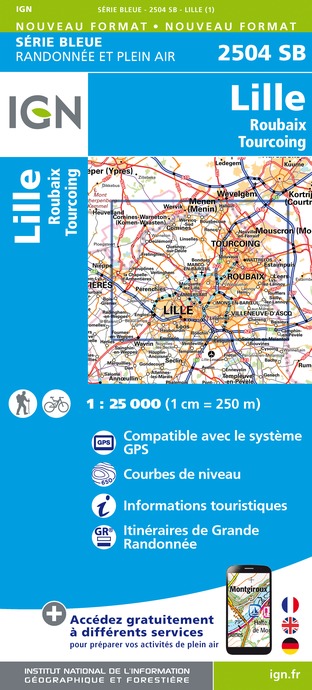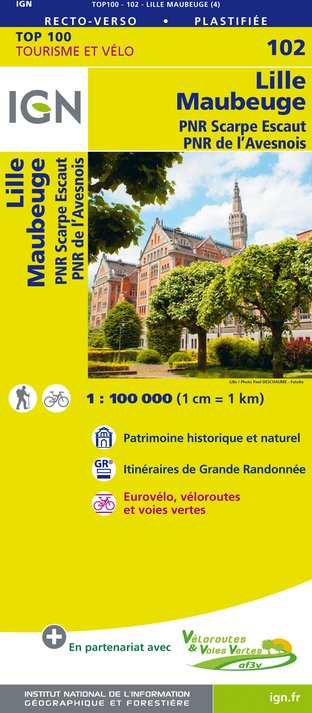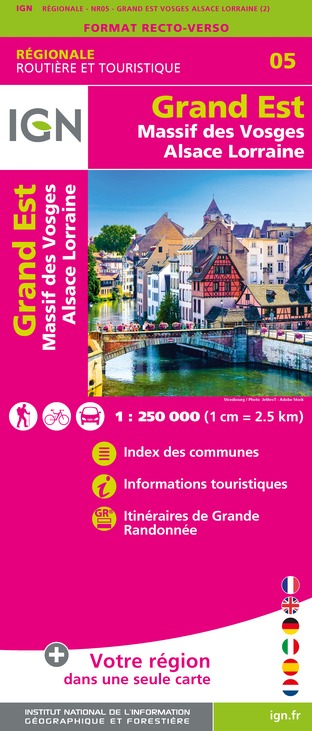Alert
Alerts
Type of practice
Walking
Presentation
Map
Points of interest
Cirkwi brief's
Ratings and reviews
See around
Lille in the 19th century

Credit : Office de Tourisme de Lille
The Cirkwi brief
Discover Lille's Colorful 19th Century Revival Path
Walking through Lille, under the guidance of the Office de Tourisme de Lille, is like stepping into a vivid painting from 150 years ago. This itinerary brings to life the architectural fantasies born out of the industrial revolution. With the city doubling in population and tripling in size after annexing surrounding communes in 1858, Lille transformed into an urban spectacle. Architects leveraged emerging materials like enamel lava and ceramics, painting the town with rainbow hues. The once monochrome streets now boast a kaleidoscopic array of structures, from Moorish palaces to industrial castles, making every step an exploration of Lille’s reimagined past.
Brief Technical Overview
This urban trail spans 5 kilometers, with minimal elevation - starting at 20 meters and peaking at 23 meters above sea level. The total positive elevation gain is a mere 1 meter, making it an exceptionally flat route. Authored by the Office de Tourisme de Lille, this itinerary is ideal for walkers of all levels, offering an easy yet enriching exploration of Lille's 19th-century architectural renaissance. Its accessibility ensures that enthusiasts from varied backgrounds can comfortably navigate through Lille's historic marvels.
Seasonal Tips and Safety Advice
To fully enjoy Lille's architectural marvels, consider the seasonal nuances. Spring and Autumn offer temperate climates perfect for walking, while Summer brings vibrant street life, albeit with potentially higher temperatures. Winter, though colder, highlights the city’s festive decorations. Regardless of the season, wear comfortable walking shoes and carry water. Always stay aware of your surroundings, especially during busy festivals or events. Remember, the flat terrain allows for an easy stroll, but it’s essential to cross streets carefully and adhere to pedestrian zones.
Historical Significance of Lille
Lille's rich history, marked by the annexation of surrounding communes in 1858, is emblematic of France's industrial expansion. This strategic enlargement not only doubled the city’s population but also tripled its size, setting the stage for its architectural and cultural revolution. The Place de la République, with its imperial influences, and the opulent Palais des Beaux-Arts, symbolize Lille's transformation into a center of industrial prowess and cultural richness. Importantly, Lille’s preserved architectural diversity from the 19th century offers a unique window into its past as a burgeoning metropolis of innovation and splendor.
Weather Insights and Best Visit Times
Lille’s climate is characterized by mild summers and cool winters, with occasional rain throughout the year. The most pleasant months for exploring Lille's architectural wonders are late spring (May to June) and early autumn (September to October), when the weather is comfortably mild and the cityscape is either blooming with spring colors or elegantly transitioning into autumnal hues. Winter visits can be equally charming, especially during the festive season, though colder temperatures necessitate warm clothing. Remember, Lille’s weather can be unpredictable, so always check the forecast and dress accordingly for your architectural journey.
Walking through Lille, under the guidance of the Office de Tourisme de Lille, is like stepping into a vivid painting from 150 years ago. This itinerary brings to life the architectural fantasies born out of the industrial revolution. With the city doubling in population and tripling in size after annexing surrounding communes in 1858, Lille transformed into an urban spectacle. Architects leveraged emerging materials like enamel lava and ceramics, painting the town with rainbow hues. The once monochrome streets now boast a kaleidoscopic array of structures, from Moorish palaces to industrial castles, making every step an exploration of Lille’s reimagined past.
Brief Technical Overview
This urban trail spans 5 kilometers, with minimal elevation - starting at 20 meters and peaking at 23 meters above sea level. The total positive elevation gain is a mere 1 meter, making it an exceptionally flat route. Authored by the Office de Tourisme de Lille, this itinerary is ideal for walkers of all levels, offering an easy yet enriching exploration of Lille's 19th-century architectural renaissance. Its accessibility ensures that enthusiasts from varied backgrounds can comfortably navigate through Lille's historic marvels.
Seasonal Tips and Safety Advice
To fully enjoy Lille's architectural marvels, consider the seasonal nuances. Spring and Autumn offer temperate climates perfect for walking, while Summer brings vibrant street life, albeit with potentially higher temperatures. Winter, though colder, highlights the city’s festive decorations. Regardless of the season, wear comfortable walking shoes and carry water. Always stay aware of your surroundings, especially during busy festivals or events. Remember, the flat terrain allows for an easy stroll, but it’s essential to cross streets carefully and adhere to pedestrian zones.
Historical Significance of Lille
Lille's rich history, marked by the annexation of surrounding communes in 1858, is emblematic of France's industrial expansion. This strategic enlargement not only doubled the city’s population but also tripled its size, setting the stage for its architectural and cultural revolution. The Place de la République, with its imperial influences, and the opulent Palais des Beaux-Arts, symbolize Lille's transformation into a center of industrial prowess and cultural richness. Importantly, Lille’s preserved architectural diversity from the 19th century offers a unique window into its past as a burgeoning metropolis of innovation and splendor.
Weather Insights and Best Visit Times
Lille’s climate is characterized by mild summers and cool winters, with occasional rain throughout the year. The most pleasant months for exploring Lille's architectural wonders are late spring (May to June) and early autumn (September to October), when the weather is comfortably mild and the cityscape is either blooming with spring colors or elegantly transitioning into autumnal hues. Winter visits can be equally charming, especially during the festive season, though colder temperatures necessitate warm clothing. Remember, Lille’s weather can be unpredictable, so always check the forecast and dress accordingly for your architectural journey.
Automatically generated.
IGN cards

2504SB - LILLE ROUBAIX TOURCOING
Editor : IGN
Collection : TOP 25 ET SÉRIE BLEUE
Scale : 1:25 000
13.90€

102 LILLE MAUBEUGE PNR SCARPE ESCAUT PNR DE L'AVESNOIS
Editor : IGN
Collection : TOP 100
Scale : 1:100 000
8.40€

101 LILLE CALAIS LE TOUQUET-PARIS-PLAGE PNR DES CAPS ET MARAIS D'OPALE
Editor : IGN
Collection : TOP 100
Scale : 1:100 000
8.40€

D59-62 NORD PAS-DE-CALAIS
Editor : IGN
Collection : CARTES DÉPARTEMENTALES IGN
Scale : 1:150 000
5.90€

NR01 HAUTS-DE-FRANCE
Editor : IGN
Collection : CARTES RÉGIONALES IGN
Scale : 1:250 000
6.80€

NR05 GRAND EST RECTO/VERSO MASSIF DES VOSGES ALSACE LORRAINE
Editor : IGN
Collection : CARTES RÉGIONALES IGN
Scale : 1:250 000
6.80€

NR04 - GRAND EST RECTO/VERSO ARDENNE CHAMPAGNE
Editor : IGN
Collection : CARTES RÉGIONALES IGN
Scale : 1:250 000
6.80€

EUROPE
Editor : IGN
Collection : DÉCOUVERTE DES PAYS DU MONDE IGN
Scale : 1:2 500 000
7.00€

PAYS-BAS BELGIQUE LUXEMBOURG
Editor : IGN
Collection : DÉCOUVERTE DES PAYS DU MONDE IGN
Scale : 1:300 000
7.00€
Technical Information
Walking
Difficulty
Not specified
Dist.
1.5 km
Type of practice
Walking
Show more
Altimetric profile
Starting point
Lat : 50.63117Lng : 3.06136
Points of interest
Data author
Ratings and reviews
To see around





